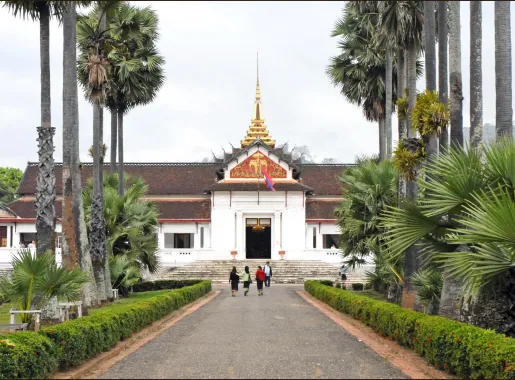
Luang Prabang Province: The Heart of Lao Heritage
Discover the charm of Luang Prabang Province, where history, culture, and natural beauty converge in the heart of Laos.
Nestled in the northern region of Laos, Luang Prabang Province is a treasure trove of culture and natural beauty. This UNESCO World Heritage site boasts a rich history, stunning temples, and a serene atmosphere that captures the essence of Laotian heritage. The town of Luang Prabang itself, with its well-preserved architecture, offers a glimpse into the past with its blend of traditional Lao wooden houses and European colonial buildings. The daily alms-giving ceremony, where saffron-robed monks collect offerings from locals, is a poignant reminder of the province's strong Buddhist traditions. Beyond the town, the province's landscapes are equally captivating. The Kuang Si Falls, with their turquoise pools, are perfect for a refreshing swim and a hike through lush forest trails. The Pak Ou Caves, located along the Mekong River, are filled with thousands of Buddha statues, creating a mystical atmosphere that enchants every visitor. For those seeking adventure, the mountainous terrain provides excellent opportunities for trekking and exploring remote villages. Luang Prabang Province is also a culinary delight. The night market is a must-visit, offering a variety of local delicacies such as Khao Soi, a fragrant noodle soup, and Sai Oua, a spicy Lao sausage. The region's coffee, grown in the Bolaven Plateau, is a treat for coffee enthusiasts. Whether you're a history buff, nature lover, or foodie, Luang Prabang Province promises a memorable experience that will leave you longing for more.
Local tips in Luang Prabang Province
- Visit early morning to witness the alms-giving ceremony in Luang Prabang town.
- Bring swimwear for a dip in the Kuang Si Falls' refreshing pools.
- Hire a local guide for a more insightful trek through the mountainous villages.
- Explore the night market for unique handicrafts and delicious street food.
- Take a boat trip along the Mekong River to visit the Pak Ou Caves.
Luang Prabang Province: The Heart of Lao Heritage
Nestled in the northern region of Laos, Luang Prabang Province is a treasure trove of culture and natural beauty. This UNESCO World Heritage site boasts a rich history, stunning temples, and a serene atmosphere that captures the essence of Laotian heritage. The town of Luang Prabang itself, with its well-preserved architecture, offers a glimpse into the past with its blend of traditional Lao wooden houses and European colonial buildings. The daily alms-giving ceremony, where saffron-robed monks collect offerings from locals, is a poignant reminder of the province's strong Buddhist traditions. Beyond the town, the province's landscapes are equally captivating. The Kuang Si Falls, with their turquoise pools, are perfect for a refreshing swim and a hike through lush forest trails. The Pak Ou Caves, located along the Mekong River, are filled with thousands of Buddha statues, creating a mystical atmosphere that enchants every visitor. For those seeking adventure, the mountainous terrain provides excellent opportunities for trekking and exploring remote villages. Luang Prabang Province is also a culinary delight. The night market is a must-visit, offering a variety of local delicacies such as Khao Soi, a fragrant noodle soup, and Sai Oua, a spicy Lao sausage. The region's coffee, grown in the Bolaven Plateau, is a treat for coffee enthusiasts. Whether you're a history buff, nature lover, or foodie, Luang Prabang Province promises a memorable experience that will leave you longing for more.
When is the best time to go to Luang Prabang Province?
Iconic landmarks you can’t miss
Kuang Si Waterfall
Experience the breathtaking beauty of Kuang Si Waterfall, a stunning natural wonder in Laos with turquoise pools and lush trails for unforgettable adventures.
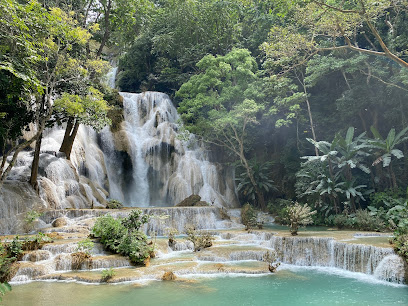
Phousi Hill
Explore Phousi Hill in Luang Prabang, a tranquil hilltop shrine with stunning views, rich culture, and spiritual significance.
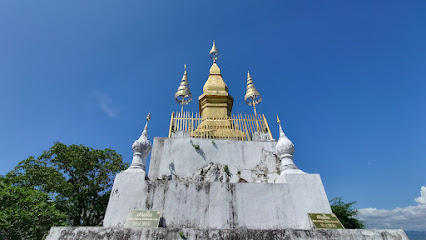
Wat Xiengthong
Explore the breathtaking beauty and spiritual serenity of Wat Xiengthong, Luang Prabang's most celebrated Buddhist temple.
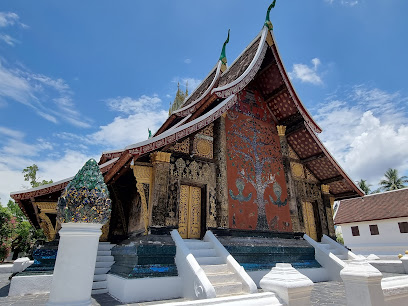
National Museum
Discover Laos' vibrant history and culture at the National Museum in Luang Prabang, a former royal palace showcasing rich heritage and stunning artifacts.
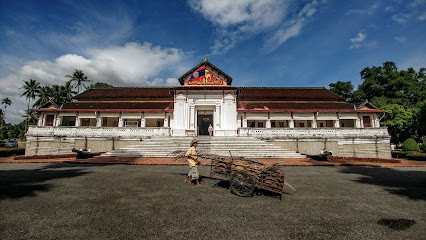
Luang Prabang morning market
Discover the vibrant Luang Prabang morning market, where local culture, delicious food, and unique handicrafts blend in a colorful shopping experience.
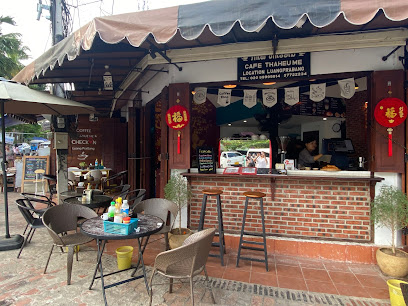
Tat Sae Waterfalls
Experience the serene beauty of Tat Sae Waterfalls in Laos, where turquoise waters and lush landscapes create an unforgettable natural escape.
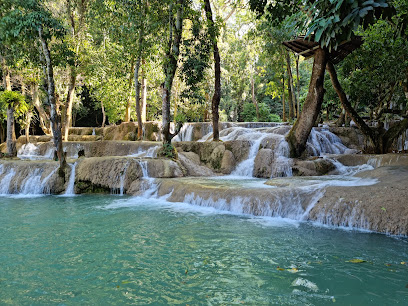
Pak Ou Caves
Explore Pak Ou Caves, a serene spiritual haven in Laos filled with thousands of Buddha statues and breathtaking views of the Mekong River.
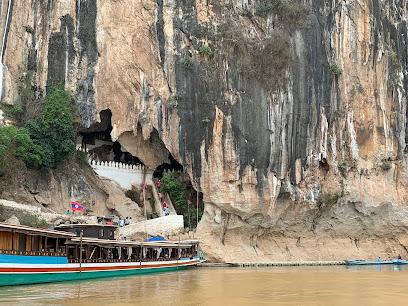
UXO Lao Visitor Center
Explore the impactful history of Laos at the UXO Lao Visitor Center, a must-visit museum dedicated to understanding unexploded ordnance and its effects.
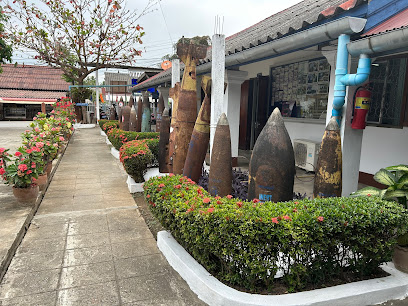
Traditional Arts and Ethnology Centre
Explore the rich cultural heritage of Laos at the Traditional Arts and Ethnology Centre in Luang Prabang, a museum dedicated to ethnic diversity and traditional arts.
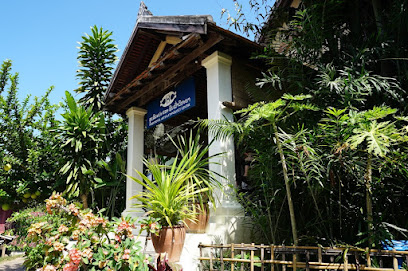
Wat Wisunarat
Discover the tranquility and rich heritage of Wat Wisunarat, the oldest Buddhist temple in Luang Prabang, a must-visit cultural gem.
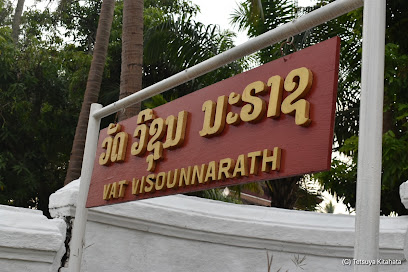
The Living Land Company
Discover the heart of Lao culture through immersive farming experiences and delicious traditional cuisine at The Living Land Company in Luang Prabang.

Garavek Storytelling
Discover the magic of Lao folklore and culture at Garavek Storytelling in Luang Prabang, where every performance is a journey through tradition and artistry.
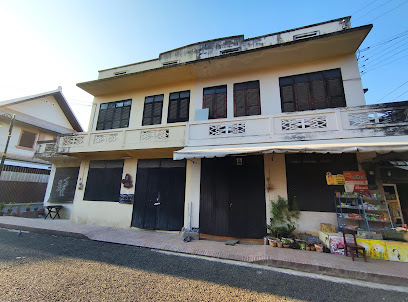
Haw Phra Bang
Explore the sacred Haw Phra Bang in Luang Prabang, a stunning temple that embodies the spiritual essence and rich cultural history of Laos.
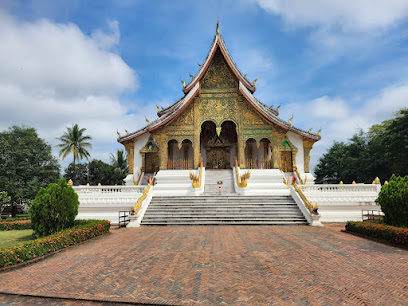
MandaLao Elephant Conservation
Experience ethical elephant tourism at MandaLao Elephant Conservation, where compassion meets nature in the heart of Luang Prabang.
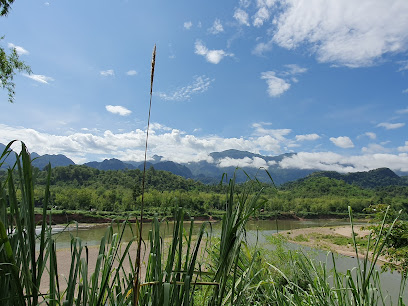
Wat May Souvannapoumaram
Explore Wat May Souvannapoumaram, a stunning Buddhist temple in Luang Prabang, and immerse yourself in the serenity and rich cultural heritage of Laos.
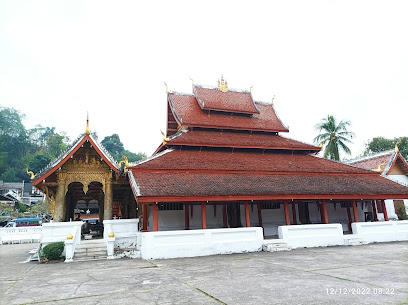
Unmissable attractions to see
Luang Prabang morning market
Discover the vibrant Luang Prabang morning market, where local culture, delicious food, and unique crafts come together in an unforgettable experience.
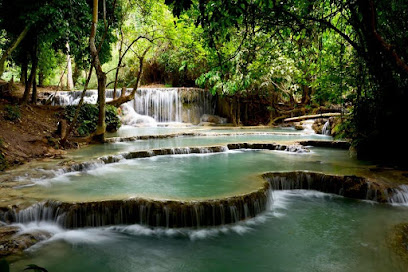
Dara Market
Explore the vibrant culture of Luang Prabang at Dara Market, where local flavors and crafts come alive in a bustling atmosphere.
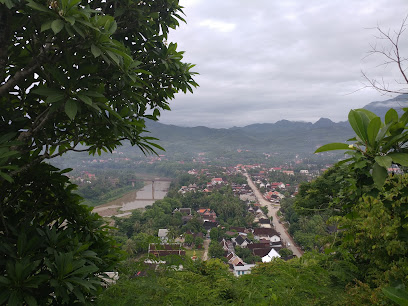
UXO Lao Visitor Center
Explore the UXO Lao Visitor Center in Luang Prabang to understand the impact of unexploded ordnance and the resilience of the Lao people through history.
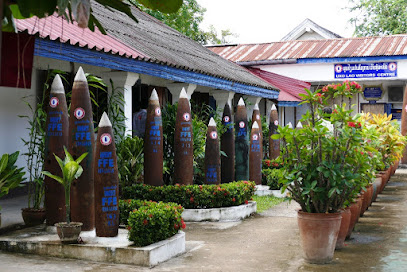
Traditional Arts and Ethnology Centre
Explore Laos' diverse cultural heritage at the Traditional Arts and Ethnology Centre, a captivating museum in Luang Prabang showcasing ethnic arts and traditions.
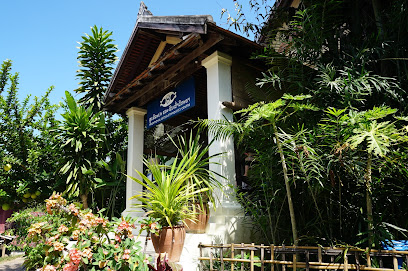
Manifa Elephant Camp
Discover the beauty of Laos through an unforgettable experience at Manifa Elephant Camp, where adventure and wildlife conservation meet.

Pha Tad Ke Botanical Garden
Experience the tranquility and beauty of Pha Tad Ke Botanical Garden, a must-visit destination in Luang Prabang for nature lovers and peace seekers.
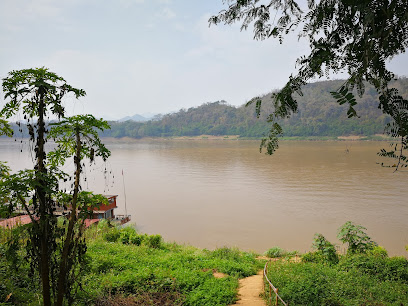
Ock Pop Tok Living Craft Centre
Explore the rich textile heritage of Laos at Ock Pop Tok Living Craft Centre, where traditional craftsmanship meets hands-on learning in Luang Prabang.
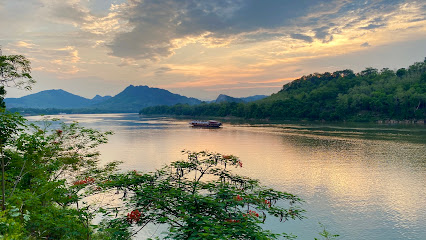
Nong Khiaw Bridge
Experience the breathtaking views of Nong Khiaw Bridge, where scenic beauty and adventure await in Laos' stunning landscapes.
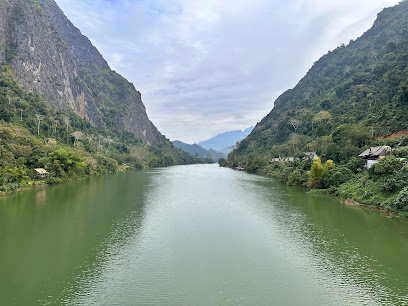
Wat Aham
Discover the tranquility of Wat Aham, a stunning Buddhist temple in Luang Prabang, where spirituality and history intertwine in a serene setting.
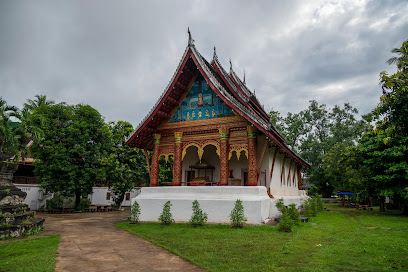
Wat That Luang
Discover the serene beauty of Wat That Luang, a stunning Buddhist temple in Luang Prabang that captures the essence of Lao spirituality and culture.
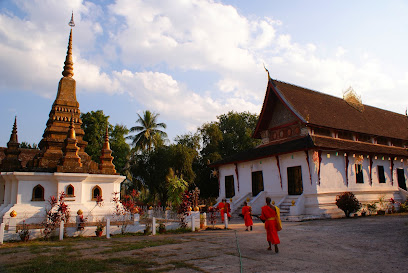
Pha Kuang Cave Adventure
Explore the breathtaking Pha Kuang Cave in Nong Khiaw, a natural wonder filled with stunning rock formations and rich cultural heritage.
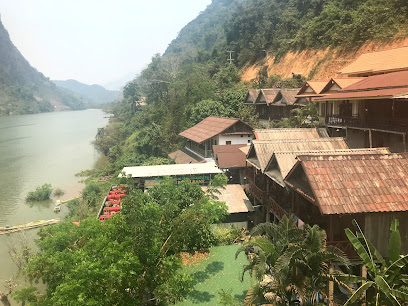
Wat Choum Khong Sourin Tharame
Explore the serene beauty of Wat Choum Khong Sourin Tharame, a stunning Buddhist temple in the heart of Luang Prabang, Laos, rich in culture and spirituality.
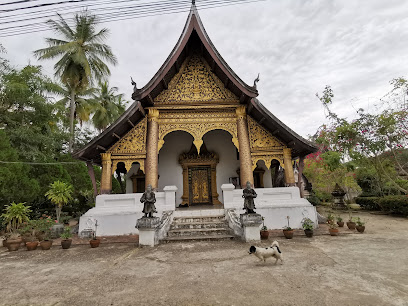
Wat Xieng Mouane
Experience the tranquil beauty of Wat Xieng Mouane, a serene Buddhist temple in Luang Prabang, Laos, perfect for cultural immersion and peaceful reflection.
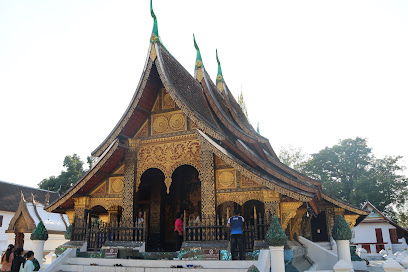
Elephant Conservation Center, Luang Prabang
Discover the Elephant Conservation Center in Luang Prabang - a sanctuary dedicated to the protection and education of elephants in their natural habitat.
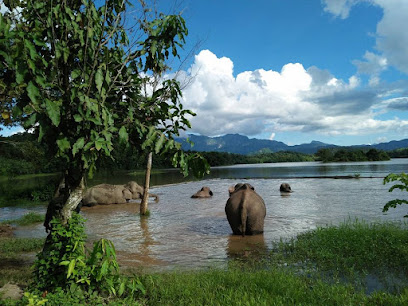
Pha Boom Viewpoint
Discover the breathtaking Pha Boom Viewpoint in Muang Ngoy, where tranquility meets stunning natural beauty for an unforgettable experience.
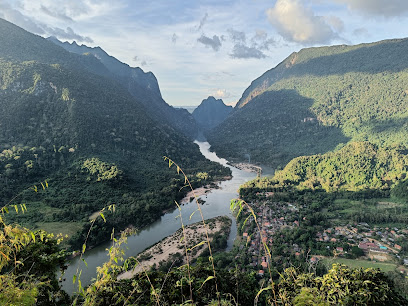
Essential places to dine
Manda de Laos
Experience the rich flavors of Laotian cuisine at Manda de Laos in Luang Prabang—where tradition meets culinary excellence.
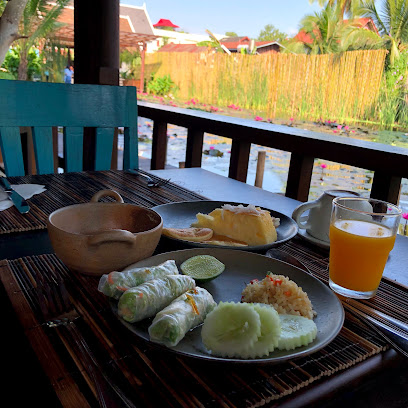
Dyen Sabai Restaurant
Discover authentic Lao cuisine at Dyen Sabai Restaurant along the picturesque Nam Khan River in Luang Prabang.
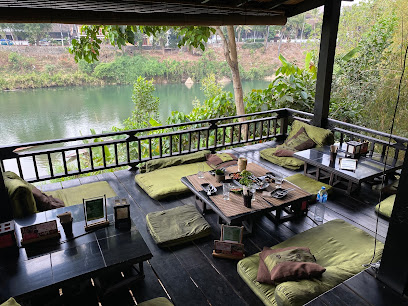
Bamboo Garden Restaurant
Experience authentic Laotian cuisine at Bamboo Garden Restaurant in Luang Prabang—where flavor meets tradition in a serene garden setting.
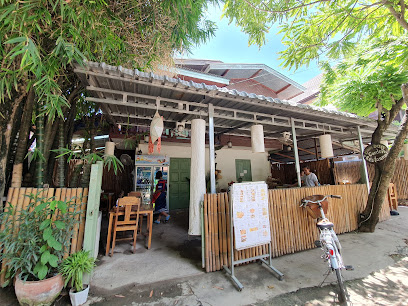
BOUANG Asian Eatery
Savor the vibrant flavors of Laotian cuisine at BOUANG Asian Eatery in Luang Prabang - a culinary journey awaits!

Tamarind
Experience authentic Laotian cuisine at Tamarind in Luang Prabang – where every dish tells a story.
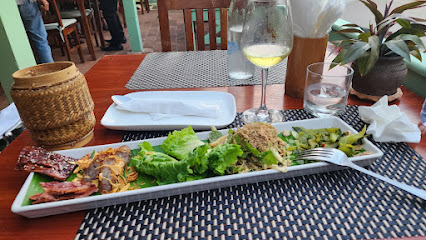
Tangor Restaurant Bar & Lounge
Discover culinary excellence at Tangor Restaurant Bar & Lounge in Luang Prabang—where Asian fusion meets fine dining in an inviting atmosphere.
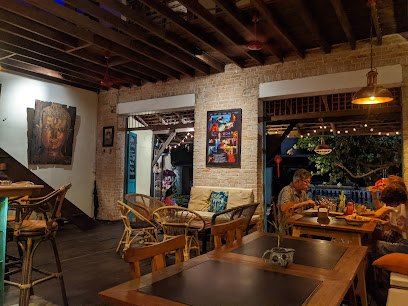
Khaiphaen
Discover authentic Laotian flavors at Khaiphaen in Luang Prabang – a culinary gem celebrating local culture and sustainable practices.
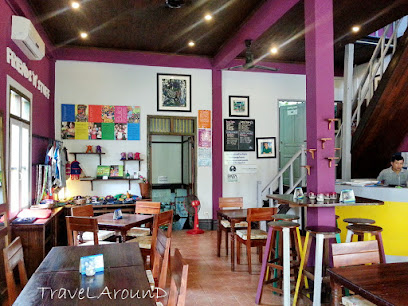
La Silapa Italian & Lao Kitchen
Experience the best of Italian and Lao cuisine at La Silapa in Luang Prabang—a perfect blend for food lovers seeking something unique.
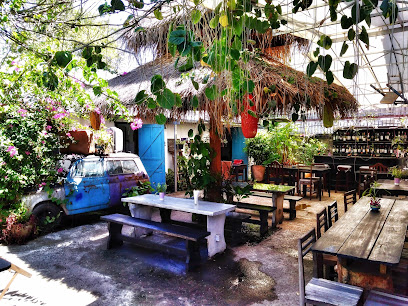
L’Elephant
Experience exquisite French cuisine amidst the cultural charm of Luang Prabang at L’Elephant.
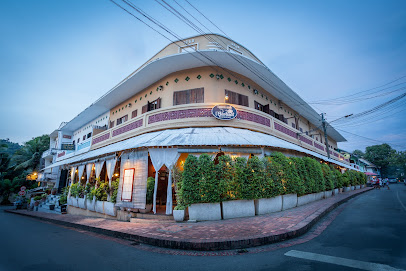
Bamboo Tree Restaurant and Cooking School
Discover authentic Laotian flavors at Bamboo Tree Restaurant & Cooking School in Luang Prabang - A culinary journey awaits!
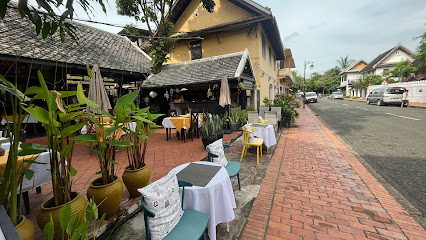
Café Toui
Discover authentic Laotian flavors at Café Toui in Luang Prabang - where every dish tells a story.

Coconut Garden
Experience authentic Laotian cuisine at Coconut Garden in Luang Prabang - where tradition meets taste.
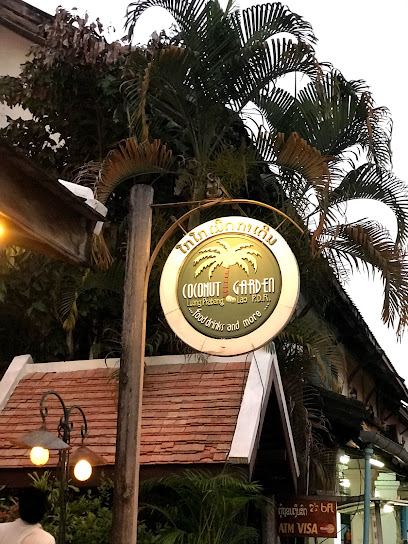
Sena Steak House
Discover the culinary delights at Sena Steak House in Luang Prabang - where Asian fusion meets traditional steakhouse excellence.
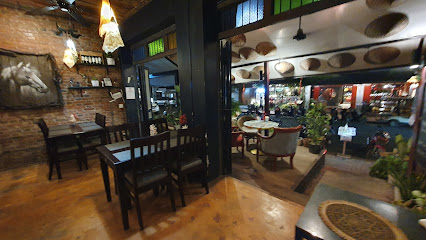
good people good food good price
Savor the best of Laotian cuisine at 'Good People Good Food Good Price', where delicious food meets friendly service at unbeatable prices.
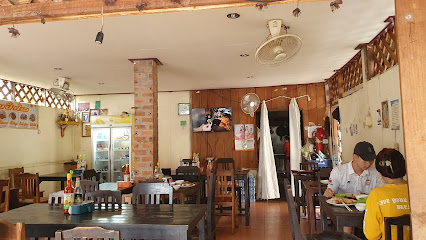
Kin Khao @Heuan chan Heritage house
Savor the exquisite blend of traditional Lao flavors and modern culinary artistry at Kin Khao @Heuan Chan Heritage House in Luang Prabang.
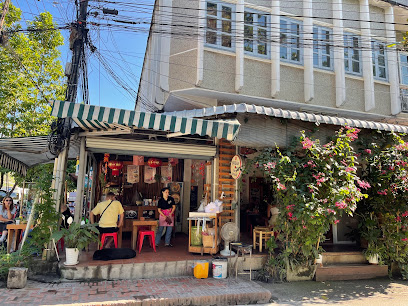
Markets, malls and hidden boutiques
Garden of Eden Luang Pra Bang
Discover the vibrant artistry of Luang Prabang at the Garden of Eden, where local crafts and creativity come to life.
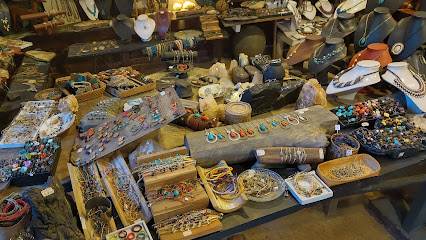
Aromdee Shop (Coffee & Natural Products)
Explore Aromdee Shop in Luang Prabang for an exquisite selection of coffee and natural products, showcasing the best of local flavors and craftsmanship.
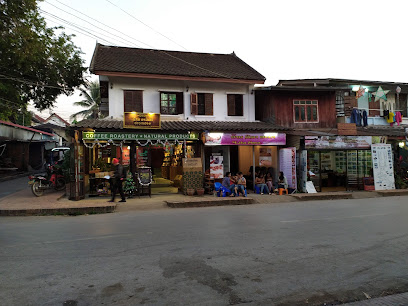
Nalongkone Shop:Saa paper handicraft
Explore Nalongkone Shop in Luang Prabang for exquisite Saa paper handicrafts that beautifully reflect Laos' rich cultural heritage and artistry.
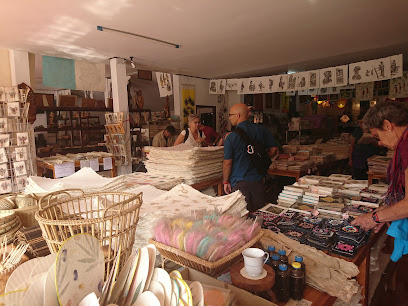
The Boutique by Ock Pop Tok
Discover the heart of Laotian craftsmanship at The Boutique by Ock Pop Tok in Luang Prabang, where every item tells a story.
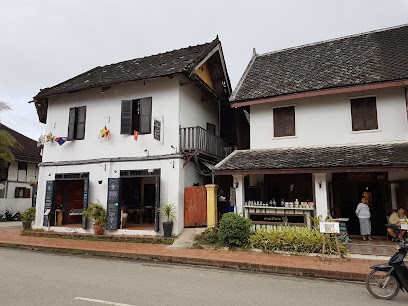
Naga Creations Art Jewelry
Explore the artistry of Naga Creations Art Jewelry in Luang Prabang, where every piece tells a story of culture and craftsmanship.
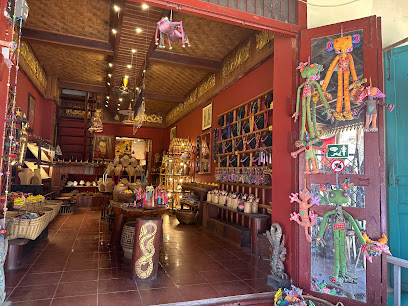
Caruso Creations Luang Prabang
Explore the vibrant artistry of Laos at Caruso Creations, a boutique that celebrates local craftsmanship in the heart of Luang Prabang.
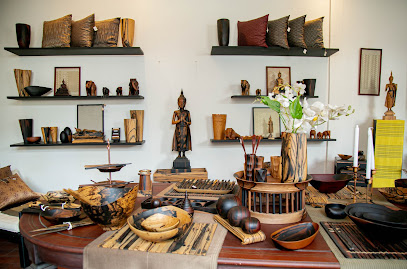
Friends Visitor Center / Anakha (The Blue House)
Discover unique clothing and handcrafted treasures at Friends Visitor Center / Anakha, a sustainable boutique in Luang Prabang, Laos.

lalalaos
Explore Lalalaos in Luang Prabang for stylish T-shirts that embody local culture and make unforgettable souvenirs.
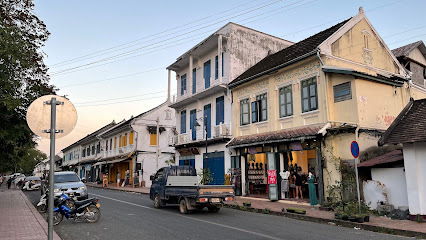
TAEC Boutique
Discover the elegance of Lao craftsmanship at TAEC Boutique, where tradition meets modern design in the heart of Luang Prabang.

Ma Te Sai
Discover unique Lao crafts, boat tours, and cozy coffee at Ma Te Sai in Luang Prabang—a perfect blend of culture and relaxation.
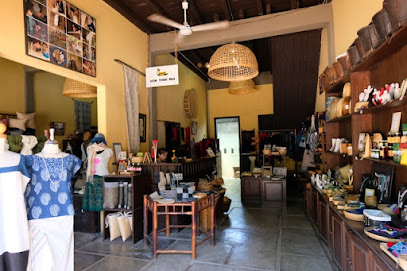
Pathana Boupha Antique House
Explore the rich cultural heritage of Luang Prabang at Pathana Boupha Antique House, a treasure trove of antiques and local crafts.
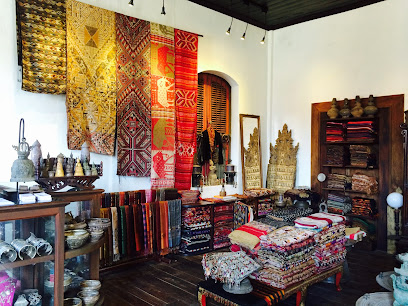
Patta Textile Gallery and Cafe
Discover the artistry of Lao textiles while enjoying delightful refreshments at Patta Textile Gallery and Cafe in Luang Prabang.
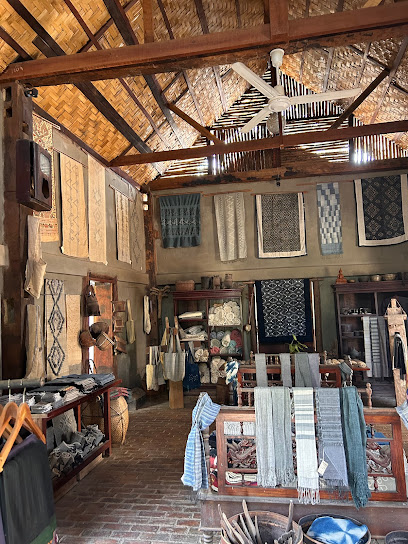
Khinthong Lao Silk
Experience the richness of Lao culture at Khinthong Lao Silk, where tradition meets exquisite craftsmanship in every fabric.
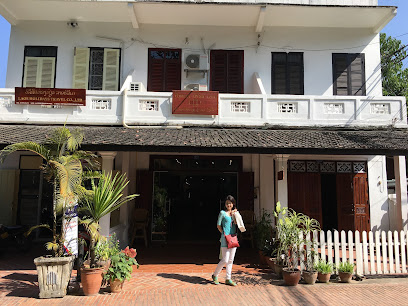
Sa Paper Handicraft Tanh Manipoun
Explore the charm of Luang Prabang with handcrafted gifts at Sa Paper Handicraft Tanh Manipoun, where local artisans bring culture to life.
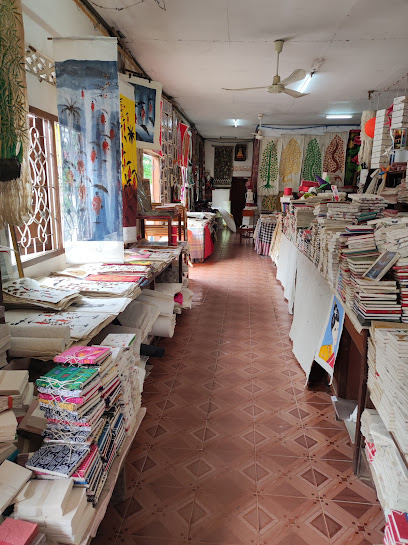
Rustic Gallery
Explore Rustic Gallery in Luang Prabang for unique souvenirs, local handicrafts, and a touch of authentic Lao culture.
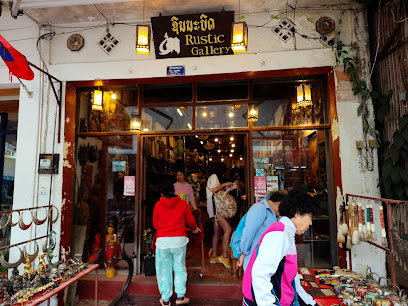
Essential bars & hidden hideouts
Maolin Tavern
Discover Maolin Tavern: A lively bar in Luang Prabang offering local flavors and a vibrant atmosphere for an unforgettable evening.
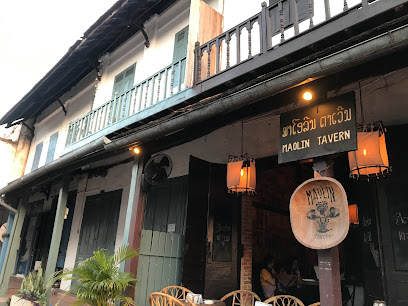
Fullmoon karaoke
Experience the vibrant karaoke culture at Fullmoon Karaoke in Luang Prabang, where every song brings joy and connection among travelers and locals.
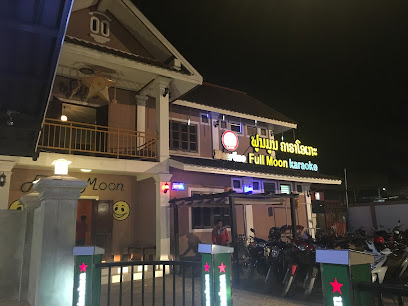
Opera Bar Luang Prabang
Discover the lively ambiance of Opera Bar Luang Prabang, a cultural hotspot offering refreshing drinks and vibrant nightlife in the heart of Laos.
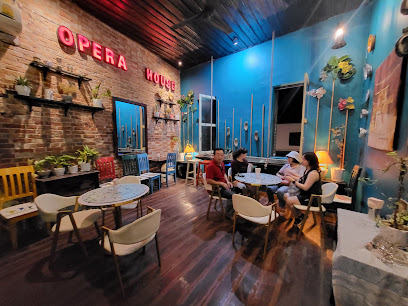
Redbul Sport bar
Discover the vibrant Redbul Sport Bar in Luang Prabang, where Pan-Asian flavors meet a lively atmosphere for an unforgettable dining experience.
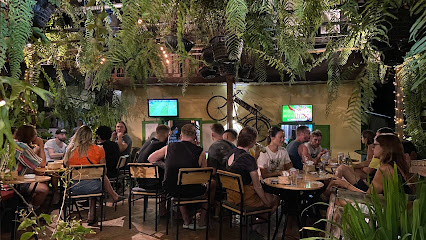
Icon Klub
Experience the vibrant nightlife of Luang Prabang at Icon Klub, where expertly crafted cocktails meet a chic and inviting atmosphere.
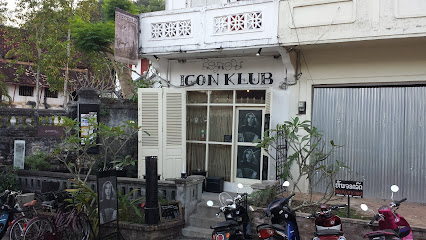
Aussie Bar - Sports Bar
Discover the lively Aussie Bar in Luang Prabang, where comfort food meets a vibrant atmosphere perfect for sports lovers and relaxation seekers.
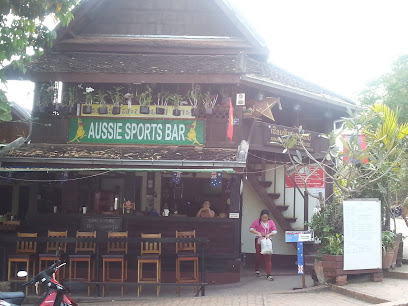
Artisan Bar
Discover the vibrant cocktail culture at Artisan Bar, a speakeasy gem in Luang Prabang known for its exquisite drinks and lively atmosphere.
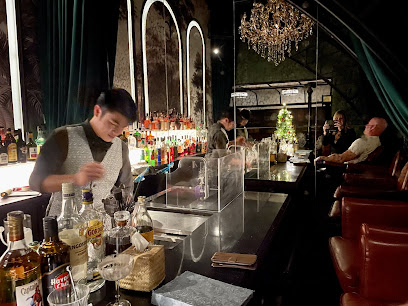
QQ Restaurant and Bar
Discover the lively atmosphere and unique flavors at QQ Restaurant and Bar in Luang Prabang, where unforgettable experiences await every visitor.

360 sunset
Enjoy breathtaking sunset views, refreshing drinks, and a vibrant atmosphere at Luang Prabang's 360 Sunset bar.
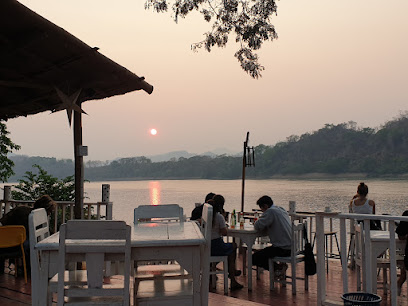
LPMC Bar & Restaurant
Discover the vibrant vibes and delicious offerings at LPMC Bar & Restaurant in Sakarine, the perfect retreat for travelers seeking local flavors.
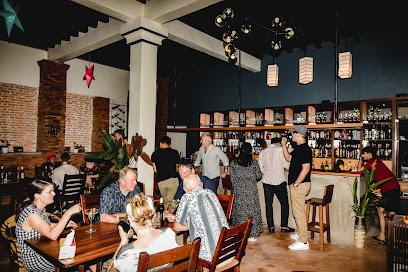
The Fat Cat
Discover the vibrant atmosphere of The Fat Cat, a must-visit bar in Luang Prabang offering exceptional drinks and local charm.
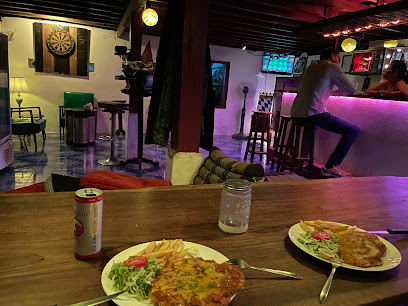
Bounthavy
Experience the vibrant nightlife of Luang Prabang at Bounthavy, a lively bar offering a taste of local culture and refreshing drinks.

Riverside bar
Discover Riverside Bar in Luang Prabang: A perfect spot for drinks, live music, and stunning riverside views.
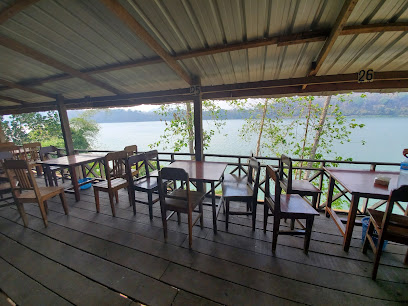
Nagini by 3 Nagas
Experience the serene ambiance and diverse drink selection at Nagini by 3 Nagas, the perfect bar retreat in Luang Prabang.
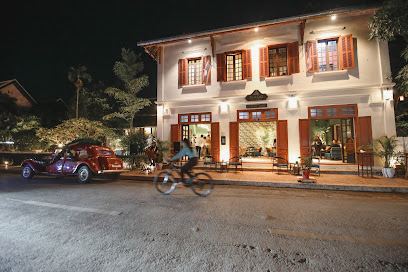
Fahrenheit Bar / Restaurant / Shisha
Experience the relaxing ambiance and diverse drink selection at Fahrenheit Bar in Luang Prabang, a perfect retreat for travelers.
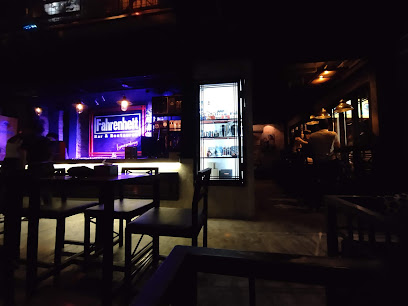
History of Luang Prabang Province
-
Luang Prabang, originally known as Muang Sua, was founded in the 8th century. It became an important center for the Tai people who migrated from southern China. The city was later renamed Luang Prabang in the 14th century after the revered Phra Bang Buddha statue was brought to the city from Angkor.
-
In the 14th century, Luang Prabang became the capital of the powerful Lan Xang Kingdom, under the rule of King Fa Ngum. This kingdom, known as the 'Land of a Million Elephants,' was one of the largest in Southeast Asia, and Luang Prabang thrived as a center of Buddhism and commerce.
-
In the late 19th century, Laos became part of French Indochina. Luang Prabang, with its strategic location and rich culture, attracted French explorers and administrators. The influence of French colonial architecture is still evident today, blending harmoniously with traditional Lao designs.
-
During World War II, Japanese forces occupied Laos, including Luang Prabang, in 1945. This period was marked by significant political upheaval and the temporary end of French colonial rule. The Japanese occupation lasted until the end of the war, after which the French reasserted control.
-
After World War II, the movement for Lao independence gained momentum. In 1953, Laos achieved full independence from France. Luang Prabang played a key role during this time, with its royal family and political leaders contributing to the country's newfound sovereignty.
-
In 1995, Luang Prabang was designated a UNESCO World Heritage Site. This recognition was due to its unique blend of traditional Lao and French colonial architecture, and its significance as a well-preserved historic town. The status has helped to preserve the city's cultural heritage and attract international tourism.
-
Luang Prabang is renowned for its numerous Buddhist temples and monasteries. The city is home to Wat Xieng Thong, one of the most important Buddhist temples in Laos, built in 1560. The daily alms-giving ceremony, where monks collect food offerings from locals and tourists, is a significant cultural and religious event in the city.
-
Luang Prabang hosts several traditional Lao festivals, such as Pi Mai (Lao New Year) in April, which features processions, water fights, and religious ceremonies. Another significant event is the Festival of Lights (Lai Heua Fai) in October, where residents decorate boats and houses with candles to honor the river spirits.
Luang Prabang Province Essentials
-
Luang Prabang Province is accessible by air, land, and water. The primary gateway is Luang Prabang International Airport (LPQ), which has flights from regional hubs such as Bangkok, Hanoi, and Siem Reap. By road, you can take a bus or minivan from Vientiane, the capital of Laos, which takes approximately 10-12 hours. There are also slow boats and speedboats available from Huay Xai, near the Thai border, which offer a scenic but lengthy journey along the Mekong River.
-
Within Luang Prabang, options for getting around include tuk-tuks, bicycles, and motorbikes. Tuk-tuks are readily available and can be hired for short trips or for the day. Bicycles and motorbikes can be rented from various shops around the town. For longer distances, such as visiting Kuang Si Falls or the Pak Ou Caves, hiring a car with a driver or joining a group tour is recommended.
-
The official currency is the Lao Kip (LAK). While credit cards are accepted in some hotels, restaurants, and larger shops, cash is still king, especially in smaller establishments and local markets. ATMs are available in Luang Prabang town, but it’s advisable to carry enough cash for rural areas. US Dollars and Thai Baht may also be accepted in some places, but it is best to use the local currency.
-
Luang Prabang is generally a safe destination for travelers. However, like any tourist destination, petty theft can occur, so keep an eye on your belongings, especially in crowded places. Avoid walking alone late at night in poorly lit areas. There are no specific high-crime areas targeting tourists, but general vigilance is always recommended.
-
In case of emergencies, dial 199 for police assistance and 195 for medical emergencies. The main hospital in Luang Prabang is available for medical issues, but it is advisable to have travel insurance that covers medical evacuation, as facilities may be limited. Pharmacies are available in town for minor health issues and over-the-counter medication.
-
Fashion: Do dress modestly, particularly when visiting temples; shoulders and knees should be covered. Avoid wearing overly revealing clothing. Religion: Do show respect for local customs and traditions. Always remove your shoes and cover your head when entering temples and religious sites. Public Transport: Do be courteous and patient when using public transport. Don’t eat or drink on public buses or boats. Greetings: Do greet people with a slight bow and a smile. The traditional greeting, 'Sabaidee,' is accompanied by a slight bow with the palms pressed together. Eating & Drinking: Do try local dishes and accept food offerings graciously. Don't refuse hospitality, as it is considered impolite. Always use your right hand when giving or receiving items.
-
To experience Luang Prabang like a local, visit the morning and night markets where you can sample local foods and purchase handmade crafts. Engage with the locals, who are generally friendly and willing to share their culture and traditions. Don’t miss the alms-giving ceremony at dawn, where monks collect food from residents and tourists. For a unique experience, take a boat trip on the Mekong River to explore nearby villages and natural attractions.
Trending Landmarks in Luang Prabang Province
-
Kuang Si Waterfall
-
Phousi Hill
-
Wat Xiengthong
-
National Museum
-
Luang Prabang morning market
-
Tat Sae Waterfalls
-
Pak Ou Caves
-
UXO Lao Visitor Center
-
Traditional Arts and Ethnology Centre
-
Wat Wisunarat
-
The Living Land Company
-
Garavek Storytelling
-
Haw Phra Bang
-
MandaLao Elephant Conservation
-
Wat May Souvannapoumaram
Nearby Cities to Luang Prabang Province
-
Things To Do in Phonsavan
-
Things To Do in Xieng Khouang
-
Things To Do in Vang Vieng
-
Things To Do in Muang Sing
-
Things To Do in Vientiane
-
Things To Do in Nan
-
Things To Do in Sapa
-
Things To Do in Chiang Rai
-
Things To Do in Udon Thani
-
Things To Do in Loei
-
Things To Do in Hanoi
-
Things To Do in Thakhek
-
Things To Do in Chiang Mai
-
Things To Do in Pai
-
Things To Do in Savannakhet




